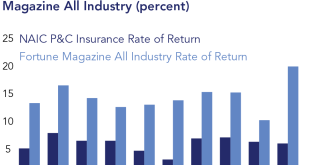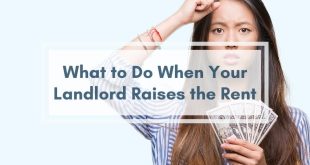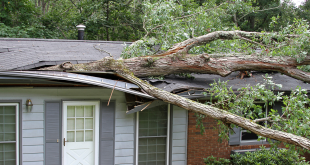You know, sometimes you hear one thing and then experience something completely different? That’s kinda what’s happening with home insurance in Florida, at least according to some new reports I’ve been digging into. There’s been talk of “historic” low rates, but a lot of homeowners are seeing their premiums climb higher than ever. What gives? Let’s take a closer look, shall we?
Understanding the “Historic” Low Rates Claim
What Exactly is Being Measured?
Okay, so when folks talk about these “historic” low rates, it’s important to understand what they’re actually measuring. Are they talking about the average premium across the entire state? Maybe they’re only looking at specific types of homes or coverage? Or perhaps they are referring to reinsurance rates, which are the rates insurance companies pay to other companies to cover their own risk. It’s like an insurance policy for insurance companies. Without understanding the details, these claims can be misleading. You’ve gotta wonder, are they painting the whole picture, or just a pretty corner of it?
Discrepancies Between Headline Rates and Actual Premiums
This is where things get a bit dicey. You might see a headline shouting about low rates, but then you open your renewal notice and BAM! Your premium has jumped. How does that even compute? Well, headline rates often don’t reflect the reality for individual homeowners. Factors like your location, the age of your home, your claims history, and even your credit score can all play a role in determining your actual premium. So, while the average might be down, your specific situation could be very different. It’s a bit like saying gas prices are low when they’re only low in one specific town that nobody lives in. Know what I mean?
The Role of Reinsurance in Setting the Base Rate
Reinsurance plays a big, but often unseen, role in all this. If reinsurance rates are low, insurance companies can theoretically offer lower premiums. However, if reinsurance costs go up – and they have been in Florida due to hurricane risks and other factors – those costs inevitably get passed down to you, the homeowner. Think of it like this: if the insurance company has to pay more to protect itself, they’re gonna charge you more too. It’s just how the game is played, unfortunately.
The Reality of Rising Premiums for Florida Homeowners
Data from the New Report: A Closer Look
So, what does this new report actually say? Well, without getting bogged down in too many numbers, it basically shows that a significant percentage of homeowners are experiencing premium increases, some quite substantial. We’re talking about hundreds, even thousands, of dollars more per year. I mean, who has that kind of extra cash lying around? This isn’t just a slight bump; it’s a serious hit to the wallet for many families. The report likely breaks down the data by region, property type, and other relevant factors, painting a clearer picture of the true cost of insuring your home in the Sunshine State.
Personal Anecdotes and Homeowner Experiences
Data is one thing, but hearing real stories from homeowners really drives the point home (pun intended!). I’ve heard from people whose premiums have doubled, forcing them to make tough choices like raising deductibles or even considering selling their homes. You know, it’s heartbreaking to hear these stories. It really brings the issue to life in a way that numbers just can’t.
Geographic Disparities: Which Areas Are Most Affected?
Not all areas of Florida are created equal when it comes to insurance rates. Coastal areas, naturally, tend to be more expensive due to the higher risk of hurricanes and flooding. But even inland areas can see significant variations depending on factors like the age of the housing stock and the frequency of claims in the region. If you live in an area prone to sinkholes, for instance, you might be paying a premium, literally and figuratively. It pays to know what risks are specific to your area. Are you living in a danger zone without even knowing it?
Factors Contributing to the Insurance Crisis
The Impact of Hurricane Activity and Climate Change
Let’s face it, hurricanes are a fact of life in Florida. And with climate change potentially making these storms more frequent and intense, insurance companies are understandably nervous. Each major hurricane causes billions of dollars in damage, leading to higher claims payouts and, ultimately, higher premiums for everyone. It’s like the whole state is constantly bracing for the next big hit. Kinda nerve-wracking, if you ask me.
Litigation and Fraud: A Persisting Problem
Unfortunately, Florida has a history of insurance litigation and fraud, which adds to the cost of doing business for insurers. Frivolous lawsuits and fraudulent claims drive up expenses, and those expenses get passed on to policyholders in the form of higher premiums. It’s a frustrating cycle, and it’s one of the key reasons why insurance rates are so high in the state. It’s like a few bad apples are spoiling the whole bunch, you know?
The Influence of Building Codes and Construction Practices
Believe it or not, building codes and construction practices can also play a significant role in insurance rates. Homes built to withstand hurricane-force winds, for example, are generally cheaper to insure than older homes that don’t meet those standards. If you’re buying a home in Florida, it’s worth checking to see if it’s built to the latest codes. It could save you a bundle on your insurance premiums. Think of it as future-proofing your investment.
Government Efforts to Stabilize the Market
Recent Legislative Changes and Their Intended Effects
The Florida government has been trying to address the insurance crisis through various legislative changes. These changes often aim to reduce litigation, attract more insurance companies to the state, and encourage homeowners to fortify their homes against storms. However, the effectiveness of these measures is still up for debate. Have they really made a difference, or are they just band-aids on a much larger problem?
The Role of the Florida Office of Insurance Regulation (FLOIR)
The Florida Office of Insurance Regulation (FLOIR) is the state agency responsible for regulating the insurance industry. They’re supposed to ensure that insurance companies are financially stable and that rates are fair and reasonable. But sometimes it feels like they’re playing catch-up, constantly reacting to the latest crisis rather than proactively preventing them. It’s a tough job, no doubt, but are they doing enough to protect homeowners?
Are These Measures Enough to Address the Underlying Issues?
Honestly, that’s the million-dollar question. While the government’s efforts are certainly a step in the right direction, many believe they don’t go far enough to address the underlying issues of hurricane risk, litigation, and fraud. Until those fundamental problems are solved, it’s likely that Florida homeowners will continue to face high insurance premiums. The real fix requires more than just surface-level changes. We need a complete overhaul, don’t you think?
Potential Long-Term Consequences
Impact on Homeownership Rates and Property Values
Sky-high insurance rates could have a significant impact on homeownership rates and property values in Florida. As insurance becomes more expensive, fewer people may be able to afford to buy homes, particularly in coastal areas. This could lead to a decline in property values, which would have a ripple effect throughout the state’s economy. It’s a scary thought, isn’t it?
The Future of the Florida Housing Market
The future of the Florida housing market is uncertain, to say the least. If insurance rates continue to rise, it could make the state less attractive to potential homebuyers, especially retirees and those on fixed incomes. This could lead to a slowdown in the market and potentially even a recession. It really makes you wonder what the next few years will hold.
What Homeowners Can Do to Mitigate Rising Costs
So, what can you do if you’re a Florida homeowner struggling with rising insurance costs? Well, there are a few strategies you can try. Shop around for the best rates, increase your deductible, and fortify your home against storms. You might also consider raising your deductible, but be sure you can afford to pay it if something happens! Every little bit helps, right?
So, there you have it. The situation with home insurance is definitely a mixed bag. While some might be touting “historic” low rates, the reality for many Florida homeowners is much different. Premiums are on the rise, driven by a combination of factors, and the long-term consequences could be significant. Don’t let it get you down though. It’s time to get informed, be proactive, and maybe even start a conversation with your neighbors. Who knows, maybe we can all find a better way forward together.
 seeme
seeme




